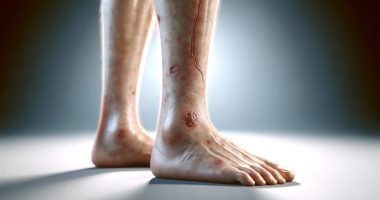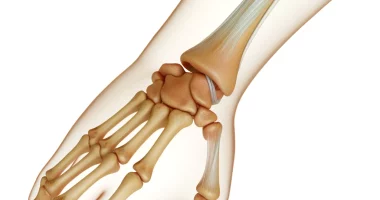Hydromyelia
Definition
Hydromyelia is an enlargement of the central canal of the spinal cord caused by various disorders of liquor dynamics. The condition becomes a consequence of congenital anomalies of the craniocervical transition, back injuries, and diseases of the spine or spinal cord. Pathology is manifested by pain syndrome, sensory disorders, and motor dysfunction. Diagnosis of the disease includes magnetic resonance imaging of the spinal cord, myelography, and ENMG. Surgical treatment is considered a radical correction method; physiotherapy and drug therapy (analgesics, neurometabolites, cholinomimetics) are prescribed if necessary.
General information
There is often confusion in neurology publications between hydromyelia and syringomyelia when the two medical terms are used synonymously, although there is a crucial difference between them. In hydromyelia, a central canal cavity filled with liquor is formed, whereas in syringomyelia such masses are located in the substance of the spinal cord. The prevalence of hydromyelia is 2.5-2.7 cases per 100,000 population.
Causes of hydromyelia
The pathology is based on blockage of liquor outflow at different levels of the spinal canal or at the level of the greater occipital foramen. Among all causes of the disease, up to 80% are associated with Chiari malformation (CM), predominantly type 1, dislocation of the cerebellar tonsils, combined with disorders of liquor dynamics. In addition, the pathology can be caused by the following causes:
- Trauma. Often, hydromyelia develops months or years after a mechanical injury to the back. It occurs as a result of adhesions in the subarachnoid space or posttraumatic necrosis.
- Spinal factors. There are several conditions that are potentially complicated by hydromyelia. These include malformations (diastematomyelia) and degenerative lesions of the spine.
- Craniocervical lesions. The group of probable causes of hydromyelia includes tumors of the posterior cranial fossa, supratentorial tumors, and basilar impaction. Pathology is often formed against the background of Dandy-Walker anomaly and arachnopathy.
Symptoms of hydromyelia
At the beginning of the disease, most patients suffer from sensory problems due to compression of the substance of the posterior horns of the spinal cord. 90% of people complain of pain in the chest, cervical-occipital area, or hands. This is explained by the frequent localization of hydromyelia in the thoracic part of the spinal canal. The pain has a dull, aching, or pulling character, appearing without connection with physical activity.
In addition to the pain syndrome, numbness, a feeling of goosebumps, and various disorders of temperature sensitivity. Due to inadequate perception of thermal stimuli, patients may receive painless burns or frostbite. A characteristic feature of hydromyelia is the preservation of tactile and proprioceptive sensitivity.
Later, motor disorders occur. Hydromyelia is characterized by peripheral paresis of the hands, especially the small muscles, which makes it difficult for a person to perform work requiring well-developed motor skills. Sometimes, the disease is accompanied by lateral leg paresis.
Since pathologies of the craniocervical area usually provoke the condition, patients experience corresponding symptoms. The triad of typical manifestations includes headache (81%), visual apparatus involvement (78%), and otoneurologic disorders (74%). A specific feature of headache is its intensification with neck movements, coughing, sneezing, and pushing.
Complications
When hydromyelia has existed for more than 8-10 years, 48% of patients have noticeable sensory disturbances, and 12% of patients experience severe neurological deficits. As a rule, disorders of the motor sphere lead to the loss of special professional skills. With the progression of the process, respiratory, swallowing, and cardiac disorders increase. Often secondary infection (pneumonia, pyelonephritis, urethritis).
Diagnosis
Hydromyelia is characterized by a polymorphic clinical picture and often runs under the mask of other diseases. Therefore, a neurologist often cannot establish a correct preliminary diagnosis during a physical examination. To identify the condition, assess the anatomical changes of the CNS organs, and determine the severity of disorders, the following diagnostic methods are prescribed:
- MRI of the spinal cord. The study is recognized as the “gold standard” for examining patients with suspected hydromyelia. MRI images reveal central cavities ranging in size from 2 mm to 25 mm, an increase in the cross-section of the spinal cord, and compression of nerve roots. To clarify the cause, an MRI of the head and spine is performed.
- Myelography. When an MRI is not possible, an X-ray examination with contrast is prescribed. The diagnostic results allow one to assess the patency of the spinal canal and identify its local dilatations.
- ENMG. This diagnostic method is indicated to exclude pathologies of the peripheral nervous system, which may be accompanied by similar clinical signs. The study involves assessing nerve impulse conduction in response to stimulation and demonstrates the degree of preservation of neuromuscular transmission.
Treatment of hydromyelia
Conservative therapy
Drug treatment is symptomatic, used in uncomplicated forms of hydromyelia, and mild neurological deficit. Due to the unstable stabilization of the process and the variety of clinical symptoms, therapy should be comprehensive and continuous. The following drugs show good effectiveness in preventing the progression of the condition:
- Analgesics. In mild and moderate pain syndrome, successfully used drugs from the group of non-steroidal anti-inflammatory drugs, which, when indicated, can be enhanced by local injection of anesthetics.
- Cholinomimetics. This group of medicines improves the conduction of nerve impulses and reduces sensory and motor disorders.
- Neuroprotectants. Medications are taken in long courses to provide nutrition and blood supply to the spinal cord tissue. B vitamins and balanced mineral complexes are also prescribed for this purpose.
- Psychotropic agents. Drugs are effective in the treatment of central neuropathic pain that cannot be corrected with analgesics. Tricyclic antidepressants and anticonvulsants are also used.
If surgical correction is not possible, and in the postoperative period, a program of non-medication therapy is carried out. Special complexes of therapeutic exercise are recommended to restore motor skills, and massage courses help to slow down muscle tissue atrophy. Acupuncture and electrical stimulation are used to improve all types of sensitivity.
Surgical treatment
Neurosurgical assistance is required in patients with signs of bulbar involvement, hypertension-hydrocephalus syndrome, and rapidly increasing neurodeficiency. The main method of treatment is suboccipital decompression craniectomy, which normalizes the circulation of liquor. In posttraumatic hydromyelia, surgery on the spine and spinal cord is indicated. In many cases brain shunting procedures can also be used.
All these treatment options are available in more than 440 hospitals worldwide (https://doctor.global/results/diseases/hydromyelia). For example, Brain shunt surgery can be performed in these countries for following approximate prices:
Turkey $7.5 K in 14 clinics
China $20.9 K in 7 clinics
Israel $26.2 K – 35.3 K in 11 clinics
Germany $27.3 K in 22 clinics
United States $51.8 K – 92.3 K in 12 clinics.
Prognosis and prevention
Patients who have been operated on demonstrate good long-term results: improvement is observed in 56-94% of cases and stabilization in 6-25% of cases. However, the prognosis is less favorable when prescribing isolated conservative therapy, in which up to 47% of people suffer from worsening neurological deficits, and only 11% of people note normalization of well-being.
Patients from risk groups are recommended to limit actions that disturb liquor dynamics: exercises with imitation of the Valsalva technique, heavy lifting, and sports loads. Medical and social expertise is carried out to prevent complications and vocational guidance works at the youthful onset of the disease. When the diagnosis is established, dispensary observation by a neurologist with repeated control MRI every 2-3 years is necessary.

